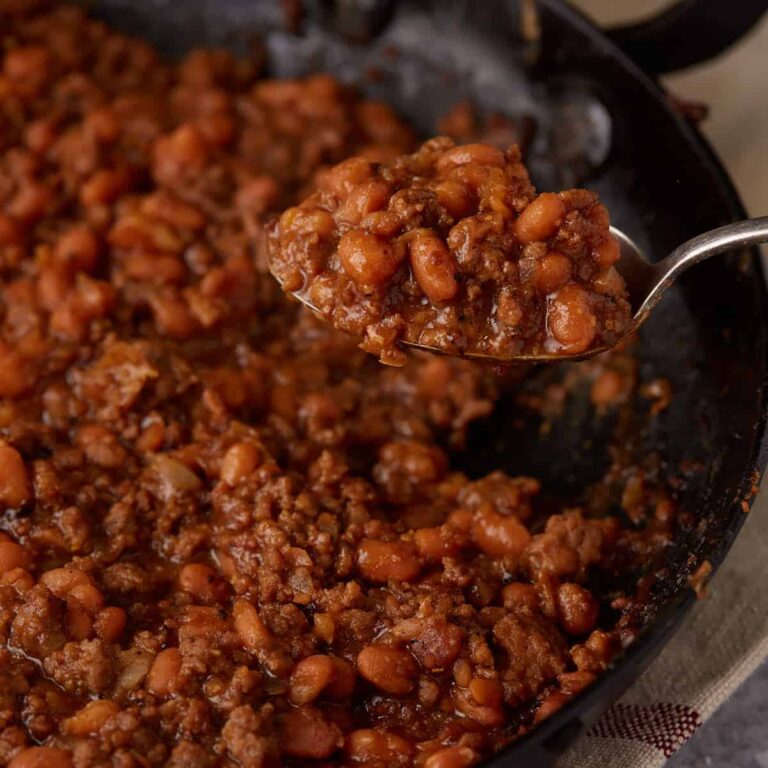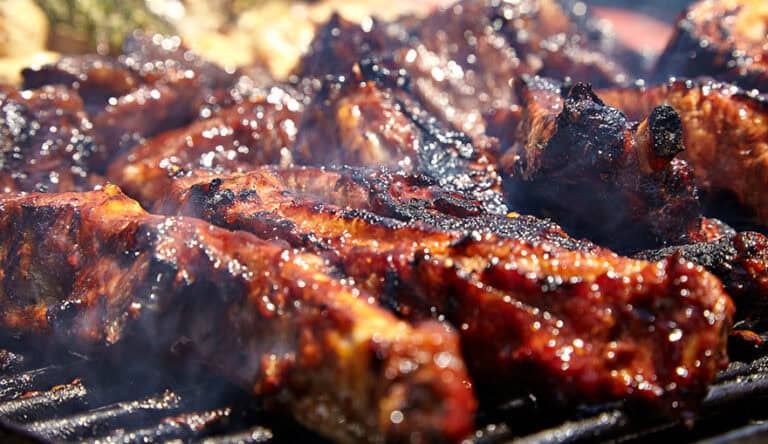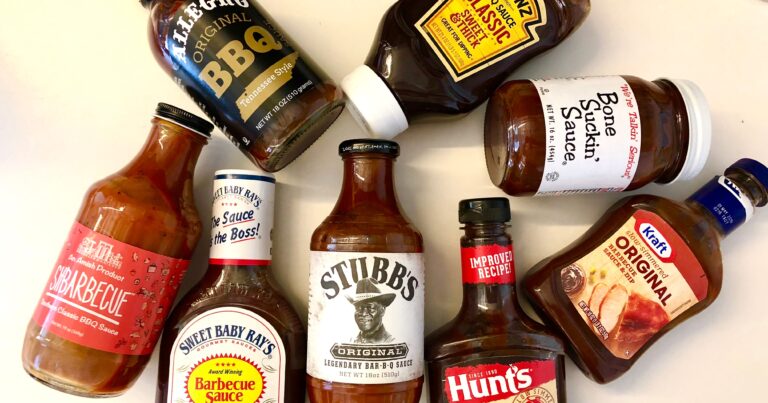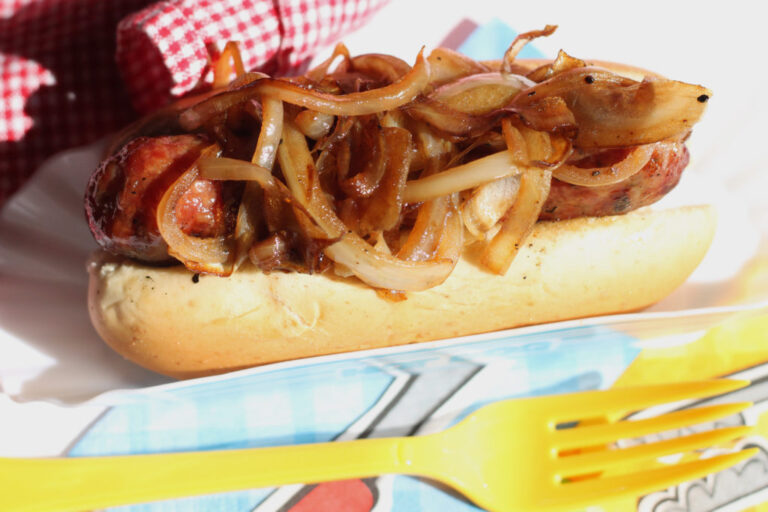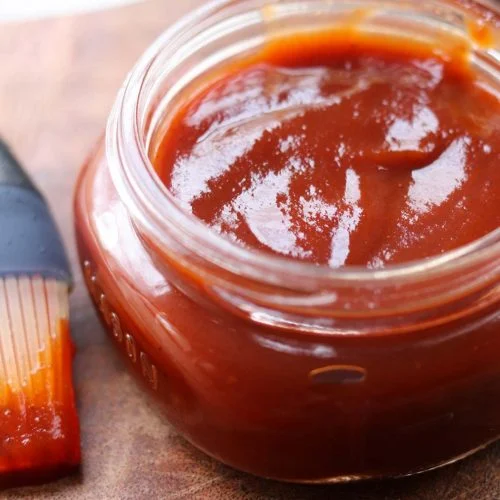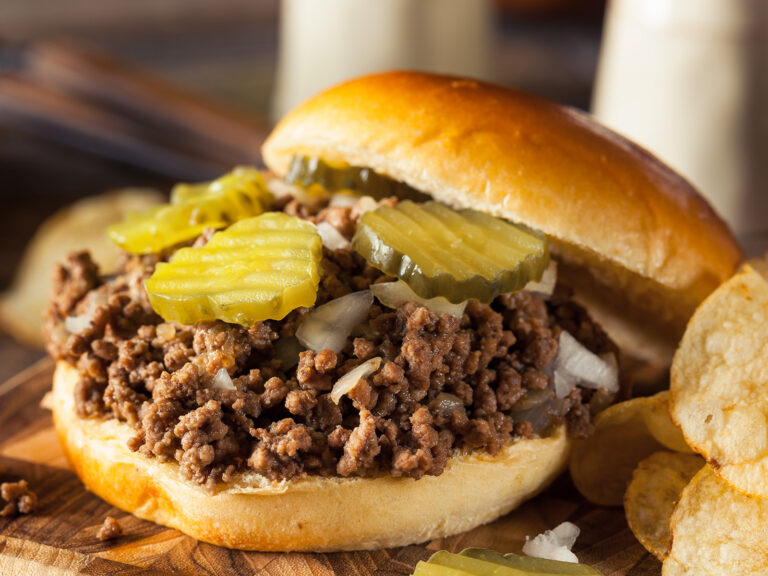Advanced Techniques for BBQ Beef Ribs
Barbecue beef ribs are a staple in many grilling enthusiasts’ repertoires, but taking your ribs from good to great requires a blend of skill, patience, and a few advanced techniques. Whether you’re aiming for competition-style perfection or experimenting with new flavors, this guide about the advanced techniques for BBQ beef ribs will provide you with all the tips and tricks you need to become a BBQ beef ribs master.
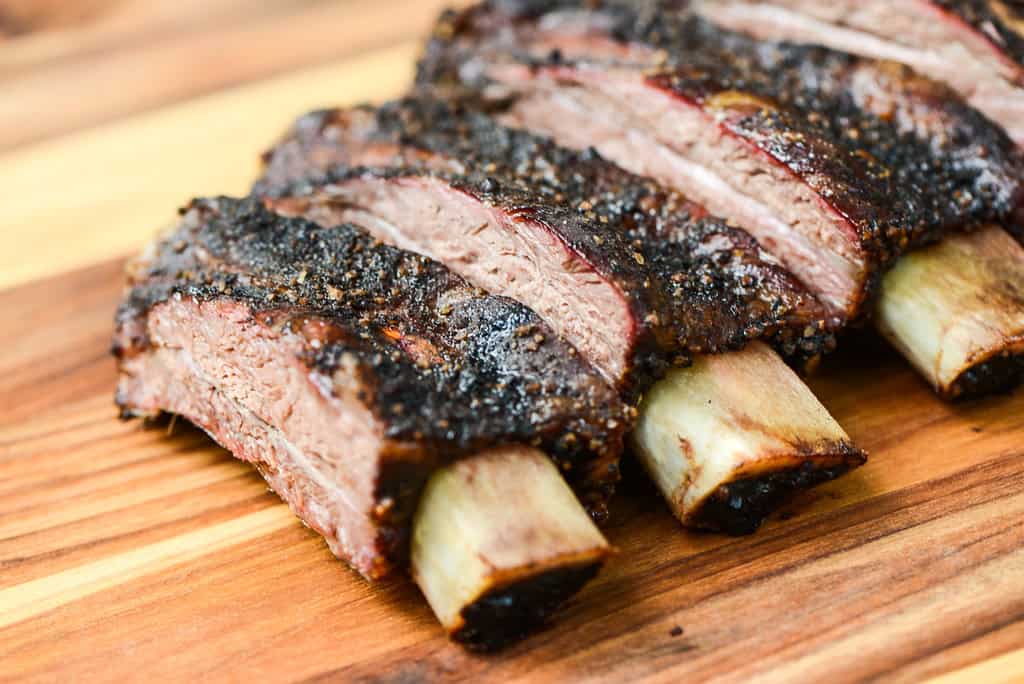
Competition-Style BBQ Beef Ribs
Achieving competition-style BBQ beef ribs is a goal for many grill masters. These ribs are judged on appearance, tenderness, and flavor, and getting them just right involves meticulous attention to detail.
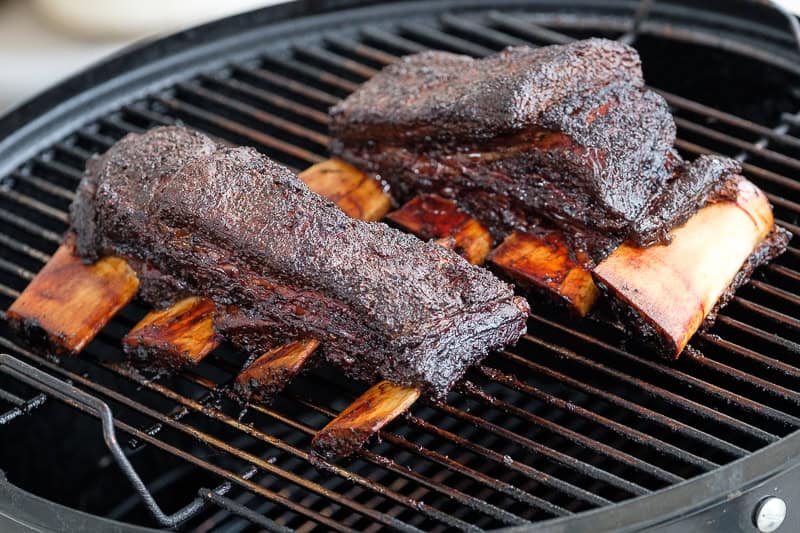
Preparation Tips
Preparation is the foundation of excellent BBQ beef ribs. Here’s how to set yourself up for success:
Choosing the Right Cut: For competition-style ribs, choose high-quality beef ribs with plenty of marbling. This fat content will render down during cooking, keeping the meat moist and flavorful. Opt for ribs from the plate section of the cow, known for their rich, beefy flavor.
Trimming: Trim excess fat and remove the membrane on the underside of the ribs. This helps the rub penetrate the meat and ensures even cooking. Use a sharp knife to carefully remove the silverskin, which can prevent seasonings from penetrating the meat.
Seasoning: Apply a generous amount of dry rub, which typically includes salt, pepper, garlic powder, and paprika. Let the ribs sit for at least an hour, or preferably overnight, to allow the flavors to penetrate the meat. For added depth, try incorporating smoked paprika or chili powder into your rub.
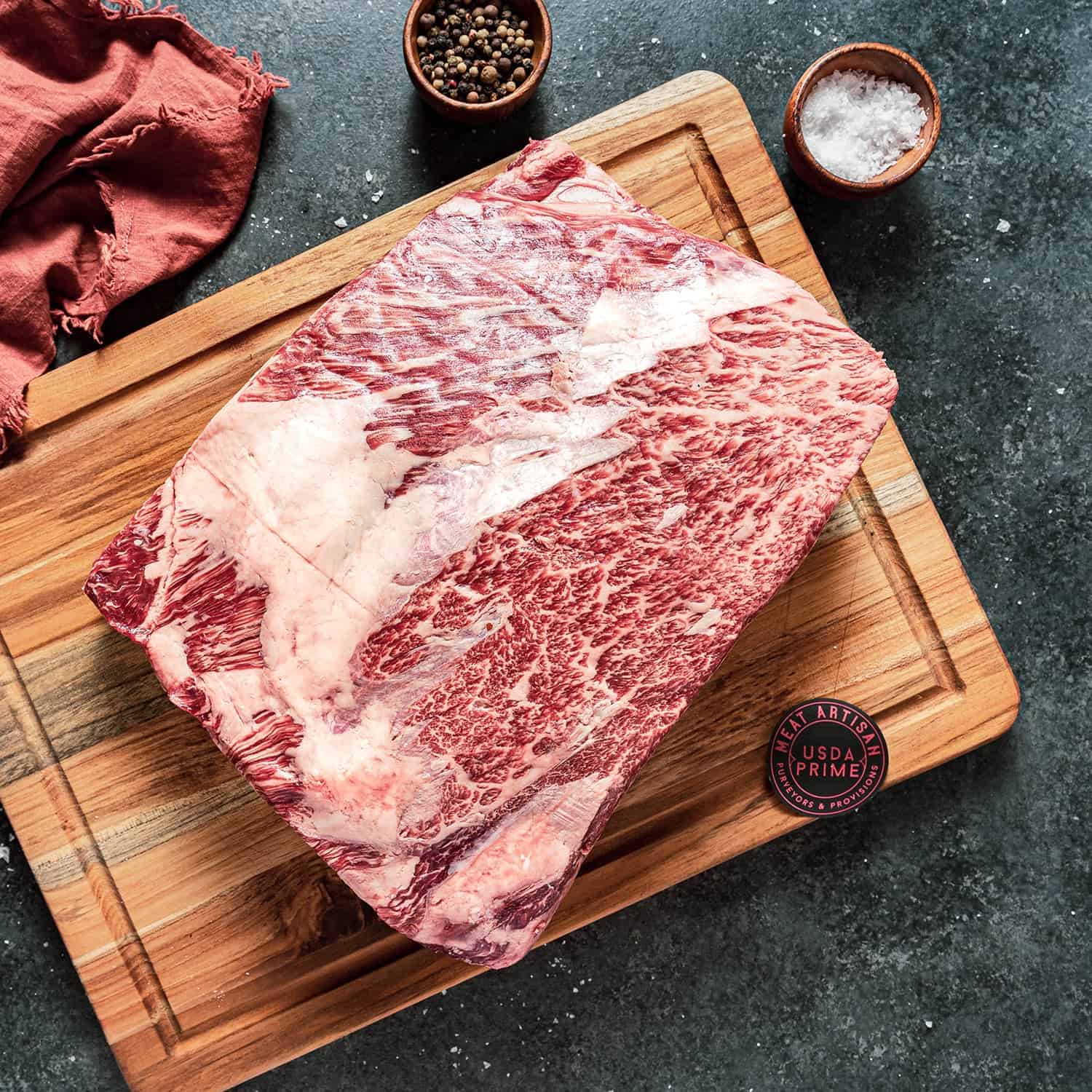
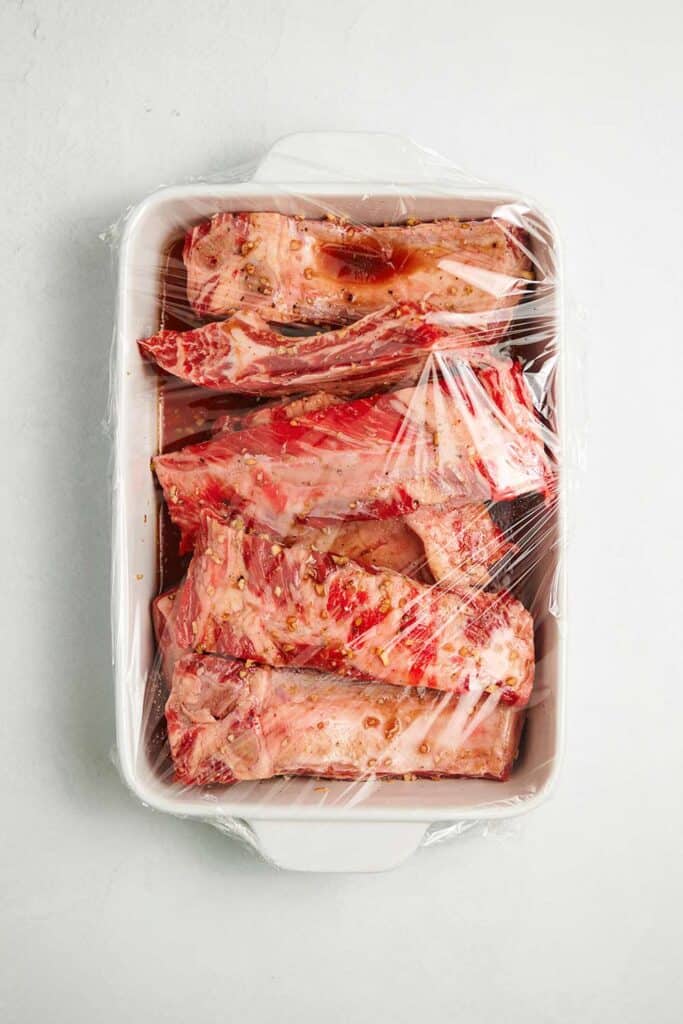
Marinating: Consider marinating the ribs in a mixture of your favorite barbecue sauce, vinegar, and spices. This can add an extra depth of flavor. Marinate in a resealable plastic bag or a covered dish in the refrigerator for several hours or overnight.
Injecting: For a boost of flavor and moisture, inject the ribs with a mixture of beef broth, melted butter, and seasonings. Use an injector to evenly distribute the mixture throughout the meat.
Dry Brining: Another effective preparation method is dry brining. Rub the ribs with a mixture of salt and spices and let them rest uncovered in the refrigerator for 12 to 24 hours. This helps to enhance the meat’s natural flavor and improve its texture.
Cooking Tips
Perfect cooking is crucial for competition-style BBQ beef ribs. Follow these steps to ensure your ribs are tender and flavorful:
Low and Slow: Cook the ribs at a low temperature, around 225°F (107°C), for several hours. This allows the connective tissue to break down without drying out the meat. Maintain a consistent temperature throughout the cooking process using a good quality smoker or grill.
Smoking Beef Ribs: Use a smoker or add wood chips to your grill to infuse the ribs with a rich, smoky flavor. Popular woods for beef ribs include hickory, oak, and mesquite. Soak the wood chips in water for at least 30 minutes before adding them to the smoker box or directly onto the coals.
Spritzing: Every hour or so, spritz the ribs with a mixture of apple juice and water. This keeps the ribs moist and adds a subtle sweetness. You can also use a mixture of apple cider vinegar and water for a tangy spritz.
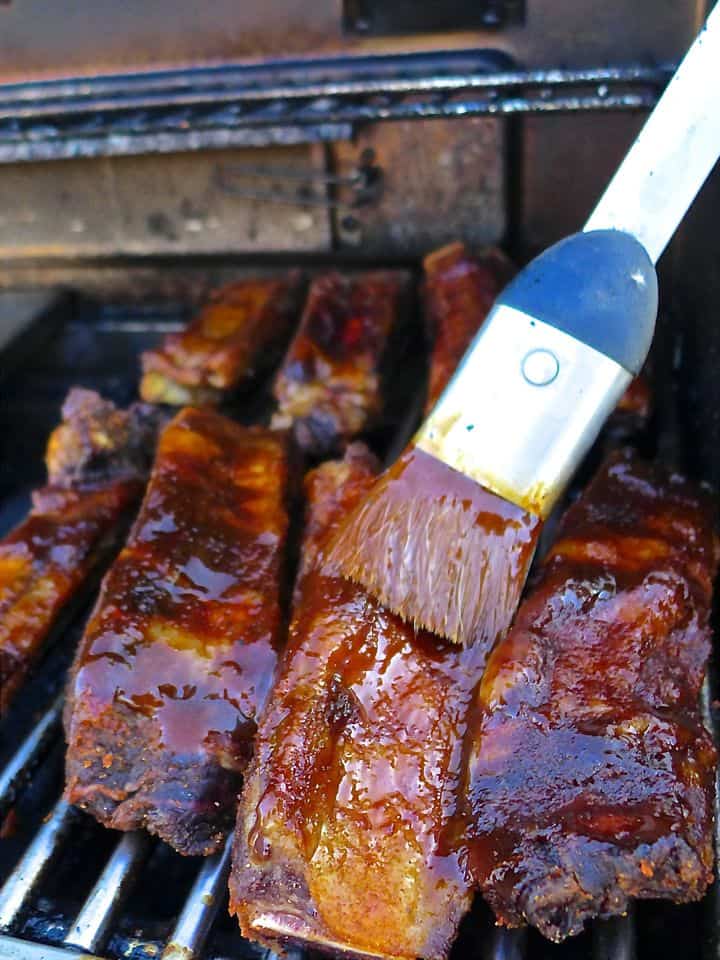
Wrapping: Once the ribs reach an internal temperature of around 165°F (74°C), wrap them in foil or butcher paper to prevent them from drying out. This is often referred to as the “Texas crutch.” Add a splash of apple juice or broth before sealing the wrap to create steam and enhance tenderness.
Finishing: Unwrap the ribs and continue cooking them until they reach an internal temperature of 195-203°F (90-95°C). This is the sweet spot for tender, competition-style ribs. During the final stages, you can brush on a thin layer of sauce to create a sticky, flavorful bark.
Resting: Allow the ribs to rest for at least 15 minutes after removing them from the heat. This allows the juices to redistribute throughout the meat, ensuring every bite is juicy and flavorful.
Monitoring Temperature: Use a reliable meat thermometer to monitor the internal temperature of the ribs. Insert the thermometer probe into the thickest part of the meat, avoiding contact with the bone for an accurate reading.
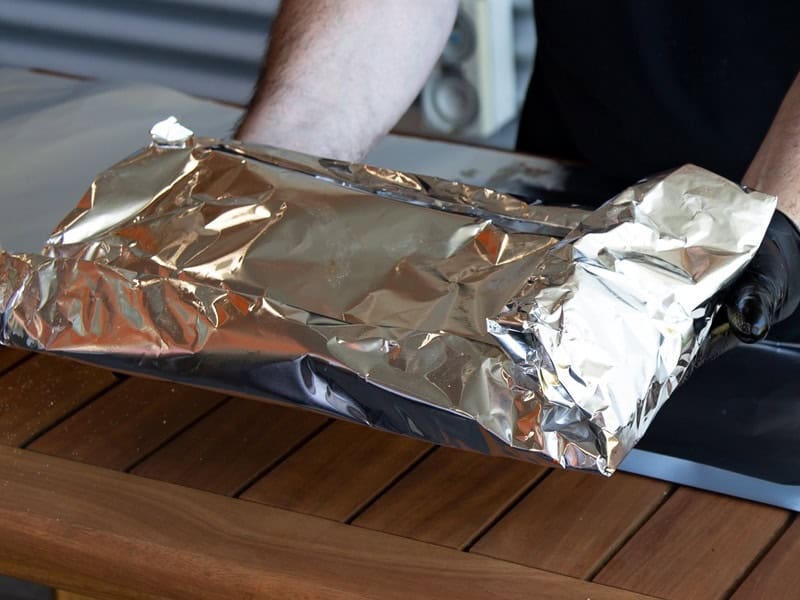
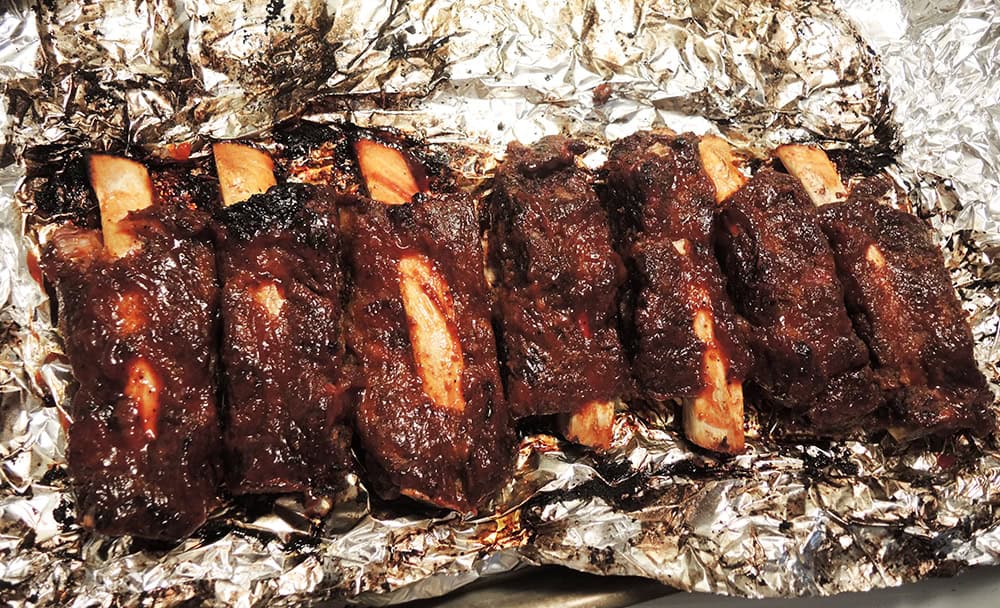

Presentation Tips
Presentation is a key aspect of competition BBQ. Here’s how to make your ribs look as good as they taste:
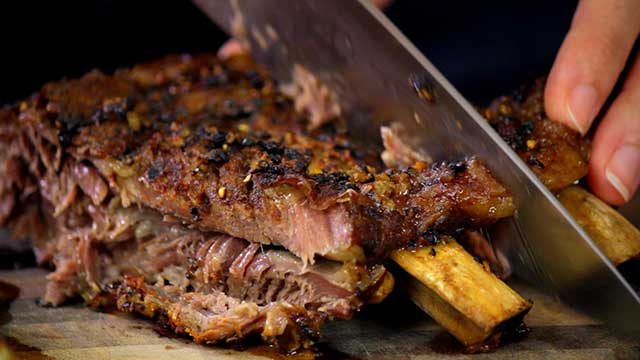
- Slicing: Use a sharp knife to slice the ribs between the bones. Each slice should have a generous amount of meat and look uniform. For a cleaner cut, allow the ribs to cool slightly before slicing.
- Saucing: Apply a thin layer of barbecue sauce just before serving. The sauce should enhance, not overpower, the flavor of the meat. Use a brush to evenly distribute the sauce, creating a glossy finish.
- Garnishing: Add a touch of color with garnishes like fresh herbs, sliced onions, or pickles. This can make your presentation more appealing and professional. Consider adding a sprinkle of coarse sea salt or cracked black pepper for an added touch of sophistication.
- Plating: Arrange the ribs on a platter with complementary sides such as coleslaw, cornbread, or baked beans. A visually appealing presentation can enhance the overall dining experience.
- Serving: Serve the ribs hot and fresh. Provide extra napkins and wet wipes for guests, as BBQ ribs can be delightfully messy to eat.
- Layering Flavors: Consider serving your ribs with a variety of sauces and condiments, such as a spicy hot sauce, a tangy vinegar-based sauce, and a sweet molasses glaze. This allows guests to customize their experience.
Experimenting with Flavors
One of the joys of BBQ is experimenting with different flavors. Here are some variations to try on your beef ribs:
Sweet Variations
Sweet flavors can balance the richness of the beef and add a delightful contrast.

- Honey and Brown Sugar: Create a glaze with honey, brown sugar, and a touch of soy sauce. Brush this on the ribs during the last 30 minutes of cooking. The sweetness of the honey and sugar will caramelize, creating a beautiful crust on the ribs.
- Fruit-Based Sauces: Use fruits like pineapple, apple, or peach to make a sweet and tangy BBQ sauce. Blend the fruit with vinegar, ketchup, and spices for a unique twist. Simmer the mixture until thickened and brush it onto the ribs during the final stages of cooking.
- Maple Syrup: Combine maple syrup with mustard and spices for a sweet and savory glaze that caramelizes beautifully on the ribs. This combination adds a complex flavor profile that is both sweet and slightly tangy.
- Molasses: Incorporate molasses into your BBQ sauce for a deep, rich sweetness. Molasses pairs well with bourbon and brown sugar for a robust, smoky flavor.
- Cinnamon and Clove: Add a hint of warmth with cinnamon and clove in your rub or sauce. These spices complement the sweetness and create a unique, aromatic profile.
- Brown Butter: Use brown butter in your glaze for a nutty, rich flavor that enhances the sweetness of the ribs. This technique adds depth and complexity to the overall flavor profile.
Spicy Variations
For those who love a bit of heat, spicy variations can add an exciting kick to your BBQ beef ribs.
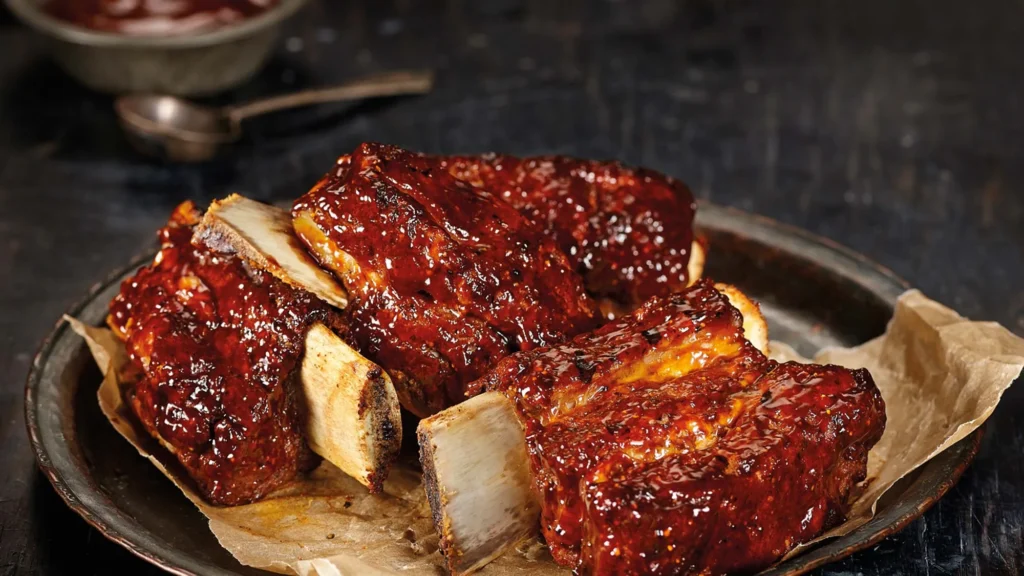
- Cayenne Pepper and Chili Powder: Add these spices to your dry rub for a fiery kick. Adjust the amount to your heat preference. For an extra layer of heat, incorporate smoked chili powders like chipotle or ancho.
- Hot Sauce: Incorporate your favorite hot sauce into the marinade or finishing sauce. Sriracha, Tabasco, and chipotle sauces are great options. Mix the hot sauce with butter for a spicy glaze that clings to the ribs.
- Jalapeños: Dice fresh jalapeños and add them to your BBQ sauce or sprinkle them over the finished ribs for extra heat and a burst of flavor. For a smoky twist, use roasted or smoked jalapeños.
- Habanero: For the adventurous, add habanero peppers to your rub or sauce. Habaneros offer a fruity, intense heat that pairs well with sweet and tangy flavors.
- Ghost Pepper: Use ghost pepper powder sparingly for a truly intense heat. Mix it into your rub or sauce in small quantities to avoid overpowering the other flavors.
- Chili Oil: Drizzle chili oil over the finished ribs for a burst of heat and a glossy finish. This adds both flavor and visual appeal to your dish.
Tangy Variations
Tangy flavors can cut through the richness of the beef and add a refreshing contrast.
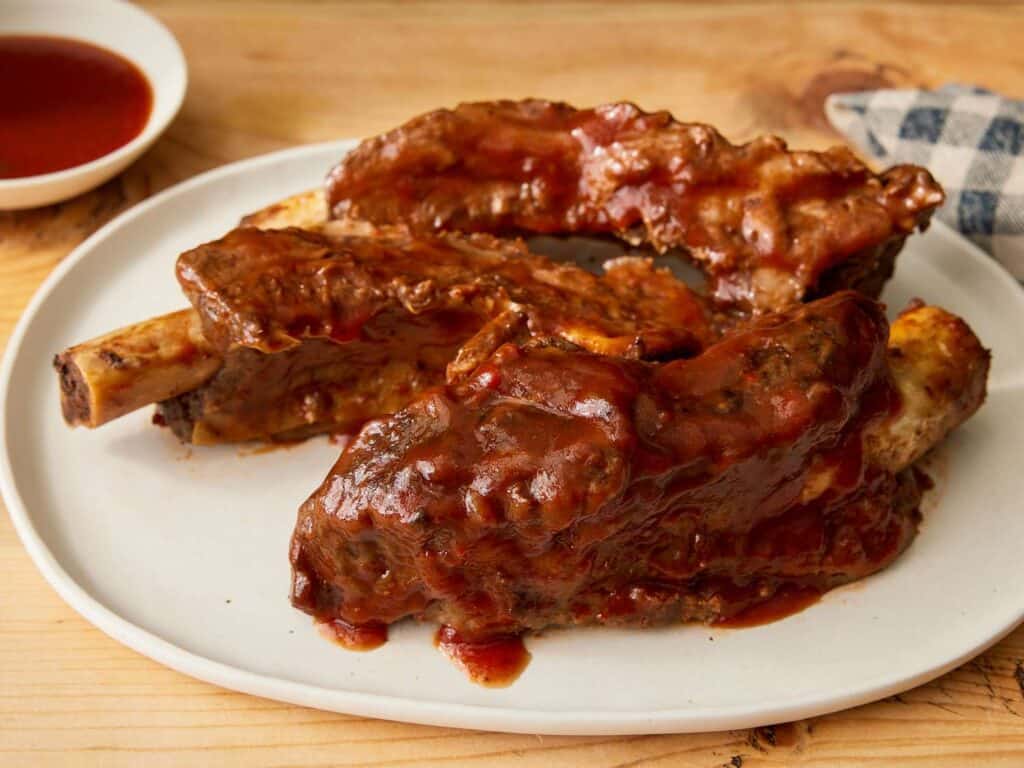
- Vinegar-Based Sauces: Create a tangy BBQ sauce with apple cider vinegar, mustard, and spices. This is especially popular in Carolina-style BBQ. The acidity of the vinegar helps tenderize the meat and balance the flavors.
- Citrus: Use lemon or lime juice in your marinade or spritz. The acidity brightens the flavors and adds a zesty note. Combine citrus juice with herbs like cilantro or thyme for a fresh, vibrant flavor.
- Pickling: Add a side of pickled vegetables like cucumbers, onions, or peppers. The acidity complements the rich, smoky ribs perfectly. You can also pickle fruits like watermelon rind or peaches for a unique twist.
- Tamarind: Incorporate tamarind paste into your BBQ sauce for a tangy, slightly sweet flavor. Tamarind adds a complex, exotic note that pairs well with spices like cumin and coriander.
- Balsamic Vinegar: Use balsamic vinegar in your glaze or sauce for a rich, tangy flavor with a hint of sweetness. Reduce the vinegar to create a syrupy consistency that clings to the ribs.
- Mustard-Based Sauce: Create a tangy mustard-based sauce with Dijon mustard, apple cider vinegar, honey, and spices. This sauce pairs well with the smoky flavor of the ribs and adds a bright, zesty contrast.
Conclusion
Mastering BBQ beef ribs requires practice and experimentation. By incorporating these advanced techniques and flavor variations, you can elevate your BBQ game and impress your guests with competition-worthy ribs. Enjoy the process, and happy grilling!
FAQs
Disclosure: Our blog contains affiliate links to products. We may receive a commission for purchases made through these links. However, this does not impact our reviews and comparisons. We try our best to keep things fair and balanced, in order to help you make the best choice for you.

